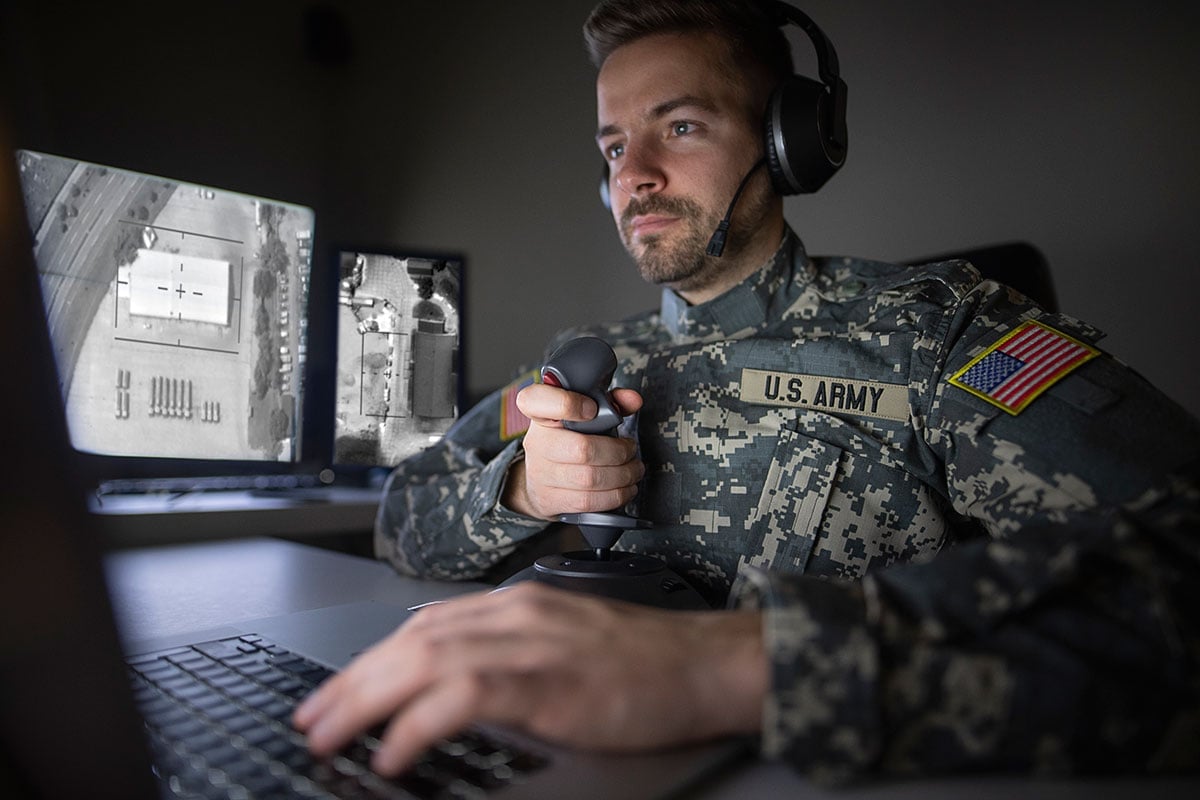Apple has recently been granted a new patent that describes a biometric authentication system that utilizes “light pattern recognition” just like Face ID and is suitable for the Mac. The US Patent & Trademark Office (USPTO) published the patent granted for Apple today (via Patently Apple).
The numerous embodiments included as part of the patent application describe how the biometric authentication module operates on a personal computing device. The described system essentially works in the same manner as Face ID, with the module releasing a “predetermined pattern of light” at the user’s face, and using the reflected light off their face as the basis for successful authentication if it does match the pattern generated when initially setting up the authentication system.
The light pattern recognition module comprises a light dot projector designed to emit a predefined light pattern, often utilizing infrared (IR) light, directed towards the user’s face positioned in front of the display. This projector emits an arrangement of light dots onto an object – the user’s face in this case – facilitating the creation of a depth map, thus capturing a three-dimensional representation of the facial surface characteristics.

Discover new horizons, always connected with eSIM
Travel the world stress and hassle-free with the best eSIM service available. Enjoy unlimited data, 5G speeds, and global coverage for affordable prices with Holafly. And, enjoy an exclusive 5% discount.
The patent embodiments include illustrations that resemble a MacBook and an iMac with a notch that strikingly resembles that on iPhone models that aren’t equipped with the Dynamic Island. On the other hand, the MacBook graphic resembles that of the current MacBook models, which are already equipped with a notch that presently houses the FaceTime camera, TrueTone sensor, camera status LED, and ambient light sensor.

Perhaps interestingly, Apple also describes another Face ID implementation on a MacBook that doesn’t utilize the notch. Instead, Face ID components are encapsulated in a “multi-function panel” that is essentially the ill-fated Touch Bar, which Apple currently only includes on the entry-level MacBook Pro. As described in the patent, the Touch-Bar-turned-Face-ID area could be covered by a protective concealment layer to help hide TrueDepth camera components.

In specific instances, the light pattern employs near-infrared or infrared (IR) light wavelengths. This light dot projector is equipped to emit multiple light rays, extending beyond the range of visible light, enabling the projection of light patterns onto the user’s facial surface. The reflected light from these projected patterns returns to the light pattern recognition module at “various angles of incidence,” contributing to the recognition process.
While no current rumors indicate that Apple is actively working to bring Face ID to the Mac in the near future, it nevertheless remains interesting to see how the company envisions the face scanning system’s implementation on the Mac, particularly with the Touch Bar-like design. Of course, Apple could be saving Face ID as a new major feature alongside the rumored OLED displays for the next MacBook Pro redesign, which could materialize by 2027.



